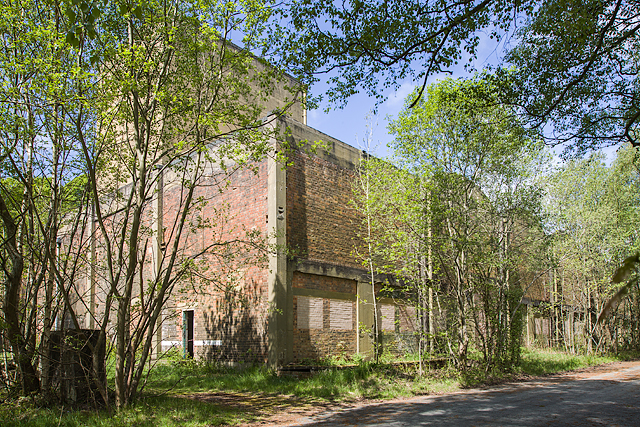Ministry of Supply Factory, Valley, Rhydymwyn: Building P6 No. 45
Introduction
The photograph on this page of Ministry of Supply Factory, Valley, Rhydymwyn: Building P6 No. 45 by Mike Searle as part of the Geograph project.
The Geograph project started in 2005 with the aim of publishing, organising and preserving representative images for every square kilometre of Great Britain, Ireland and the Isle of Man.
There are currently over 7.5m images from over 14,400 individuals and you can help contribute to the project by visiting https://www.geograph.org.uk

Image: © Mike Searle Taken: 16 May 2016
A brief history: this 35 hectare site in the Alyn Valley was used during the Second World War by the UK government for the storage and production of mustard gas, to enable it to retaliate in kind if Nazi Germany (as expected) were the first to use it as a chemical weapon. The factory opened in 1941 with over 100 specialised buildings across the site producing Pyro and Runcol variants of mustard gas, although it was the more stable and purer Runcol that was eventually made in bulk. As a consequence, Building P6 No. 45 previously used to produce Pyro became surplus, and in 1942 was adapted for experiments by gaseous diffusion units to separate uranium 235 on an industrial scale. The purpose of this top secret programme, code named 'Tube Alloys', was to produce the fuel required for an atomic bomb. For a very brief period this building was at the forefront of nuclear physics before the whole process was moved to America to be developed into the Manhattan Project. Now of international importance, Building P6 No. 45 has been listed Grade II and is by far the most important structure surviving on the Valley site. Key Facts: • The Valley site was constructed between 1939-41 to store and manufacture mustard gas. ... • By 1943 there were 2,200 people working here in over 100 buildings. ... • It had its own railway, a siding of the main Denbigh to Mold line that was used to bring materials to the site. ... • The factory cost £3.2 million in 1939 equating to approximately £54 million today. ... • The site was top secret, even the Luftwaffe didn't know of its existence, and was deliberately not shown on maps. ... • Production ceased in 1945 when 5000 tons of mustard gas was stored here as the UK strategic reserve until 1958. ... • Building 45 (P6) from 1942-45 was where the 'Tube Alloys' atomic bomb experimental project was conducted that included amongst its scientists, the 'atom spy' Klaus Fuchs. ... • By 1943-44 most of the Valley scientists had left to work on the Manhattan Project in America. ... • The Manhattan Project resulted in the production of the atomic bombs "Little Boy" and "Fat Man" that destroyed Hiroshima and Nagasaki in 1945, ending the war in the Far East. ... • Ostensibly during the post-war years the site was a 'food storage depot'. In reality it was a secret designated storage site for the UK's Gold Reserves during the Cold War in the event of hostilities. In effect, Britain's equivalent to Fort Knox. Today the site is managed by DEFRA as a nature reserve. ... • Many of the buildings have been listed Grade II, and the tunnels and 21 "Danger Area" buildings designated ancient monuments by CADW ... • Managed access to the site is by membership of the Rhydymwyn Valley History Society: https://rhydymwynvalleyhistory.co.uk/ VIRTUAL 360° TUNNELS TOUR: http://www.conquest-drones.com/Customer_Demonstrations/rhydymwyn/Rhydymwyn-Valley-Works.html Image

